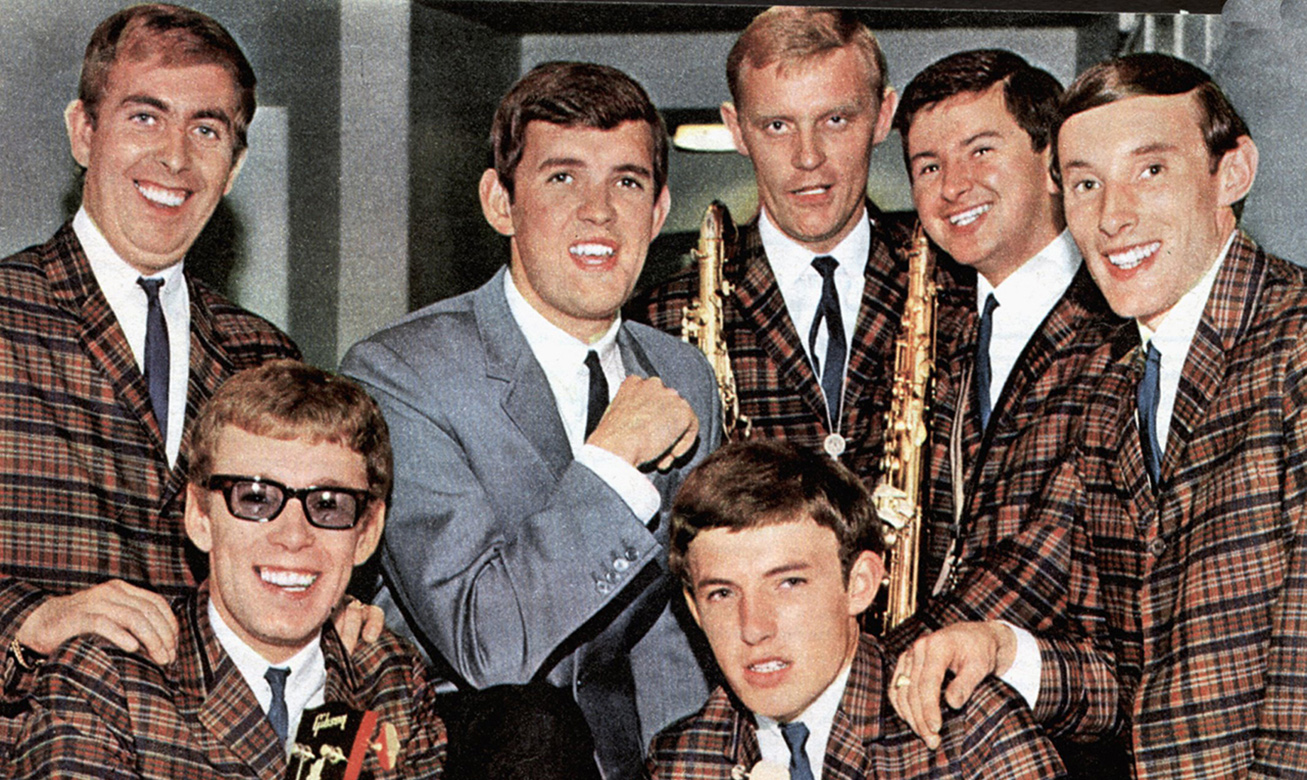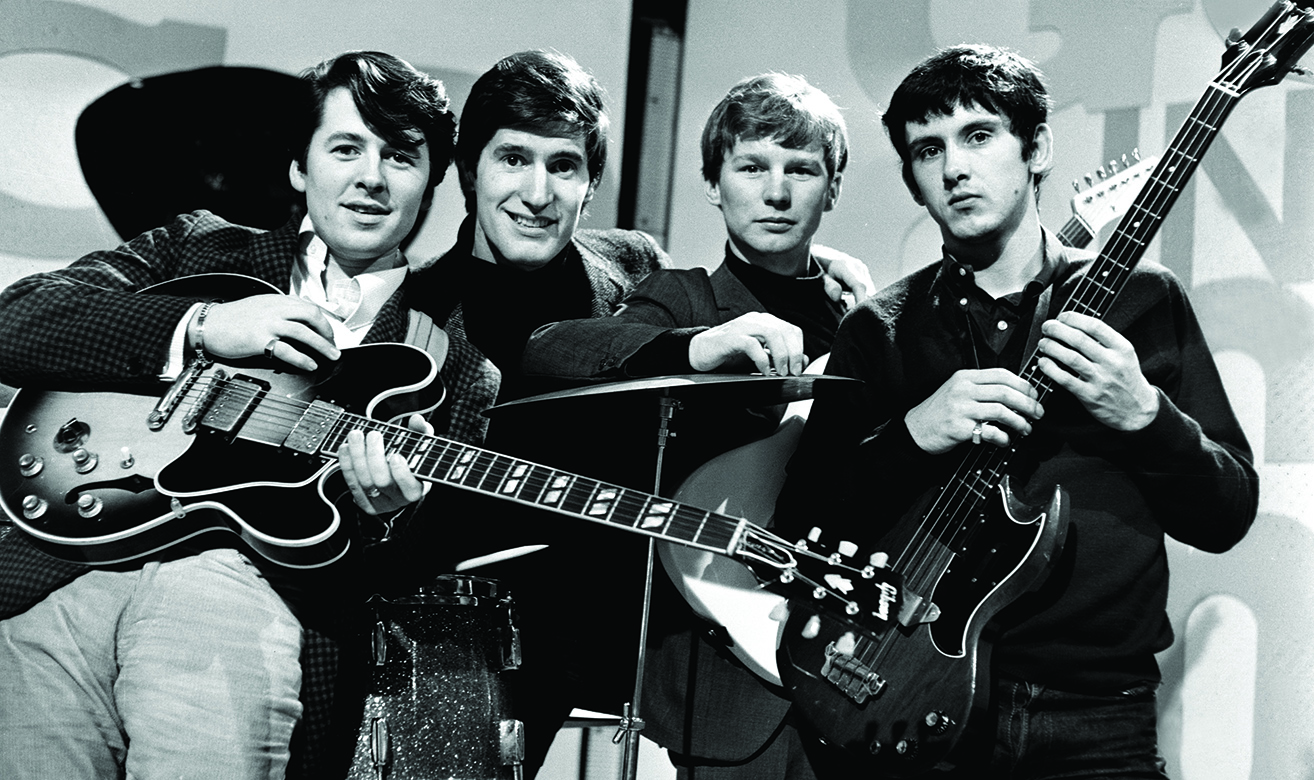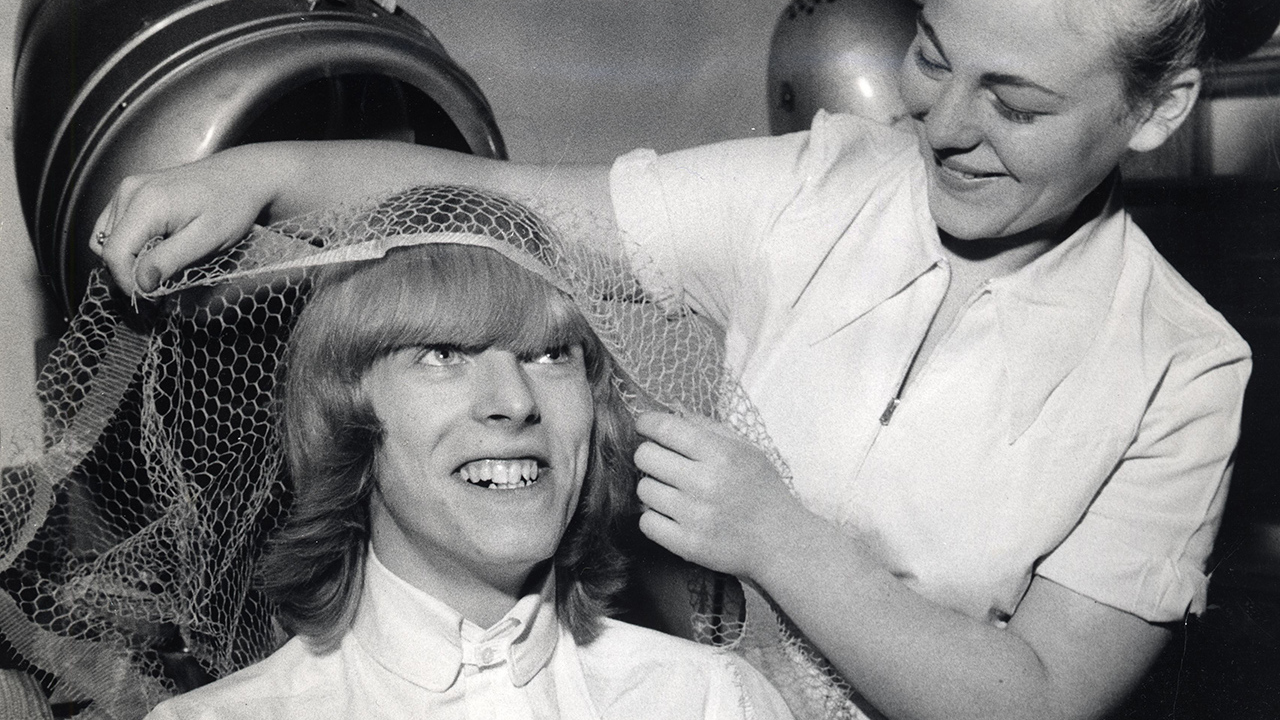They might be household names now, but back in ‘66 when they were first dipping a toe in the water they were barely known even in their home town. Some of the people who were in the same bands and took those early steps with them look back at some of the stars-in-the-making.
Johnny Kidd & The Pirates
Before earning his doubloons with Deep Purple, NICK SIMPER was part of this buccaneering combo.
**Nick Simper (bass): **“1966 was a fantastic year for us – until Johnny died in a car crash on October 8. As you can imagine, the band came to a complete halt after that. But before then we were gigging all the time. I’d say Johnny was among the greatest vocalists this country has ever had.
“But the scene was changing in sixty-six. Bands like ours had made their mark with a theatrical style of presentation, all the dressing up and the lights. But the younger rock bands coming through, like The Who and The Move, were changing all of that. They were smashing things up and being far more adventurous than we were. A generation of very explosive talent was coming to the fore. It was a very exciting time.”
Cliff Bennett And The Rebel Rousers
Gertcha! Featuring CHAS & DAVE before they became rockney cowboys.
**Cliff Bennett (vocals): **“This was a manic year for us. Because we were managed by Brian Epstein, we opened for The Beatles on what would be their last European tour. I recall in Germany, Paul McCartney and John Lennon came into our dressing room at one gig, and Paul said: ‘We’ve got this song you might like to do.’ He then sang the lyrics for Got To Get You Into My Life, while John hummed what would become the brass section. Then, when we got back to England, Brian rushed us into Abbey Road to record it, and it became our biggest hit, getting to number six.
“Chas Hodges was in the band at time. Charlie, as we called him back then, could turn his hand to playing any instrument. Fiddle, guitar, piano… he played the lot so well. Dave Peacock also played with us occasionally. It was such a fluid time that people were constantly in and out of the Rebel Rousers.”

The Steampacket /Trinity
ROD STEWART thought he was sexy even as long ago as ‘66. Plus: an early sighting of Jimi Hendrix.
**Brian Auger (keyboards): **“This was a major year for the band. In the summer we were offered a three-week residency at a major club in St Tropez. Now the money was shit, but we’d be fed and given drinks, and get to lie on the beach during the day. What could be better?
“But Long John Baldry was unhappy the pay was so bad. So a few of us had a meeting, and it was decided we would take the gig – but we’d have to leave someone behind. All of the musicians in the band were needed, and John was an established name, so it came down to one of the two other singers we had: Julie Driscoll or Rod Stewart. Rod had been treating Julie poorly, and he never helped when we loaded in the gear – we only had one roadie – because he would disappear in a cloud of hairspray and park himself in front of the nearest mirror. Rod was always dressed to the nines in the latest Carnaby Street gear. So we voted to leave him behind. Even John, who regarded Rod as his protégé, agreed. The idea was that Rod would rejoin the band later in the year when we had more engagements. But he decided to walk out of the band, although when he became famous Rod loved to tell everyone that I had fired him!
“So this guitarist turns up, was very sweet and polite, and when I asked him what he wanted to play with us, he showed me the chords to a song called Hey Joe. And the minute he began to play… man, he blew us away! The audience that night included Eric Clapton, Jeff Beck, Alvin Lee, Lulu, Sandie Shaw… it was amazing. Eric, Jeff and Alvin were still developing their own styles, but Jimi Hendrix – yes, that’s who the New York guitarist was – was already in a league of his own.”
The Searchers
Without their wayward drummer CHRIS CURTIS, there would never have been a Deep Purple.
Frank Allen (bass): “This was an important year for us. In the spring we went through a big change. We toured Australia and New Zealand opening for the Rolling Stones, and that’s when our drummer, Chris Curtis, started acting strangely. He began to isolate himself from the rest of the band – it became a case of him versus us. I think what caused it was that he began to take amphetamines; he was certainly carrying around a doctor’s bag full of pills.
“After that tour he decided he was going to quit The Searchers. We tried to get him to change his mind but he was insistent. We carried on with John Blunt on drums, but our hits were drying up. We had our final chart single with Have You Ever Loved Somebody? but that only got to number forty-eight.
“Things were definitely changing with music. Bands were becoming more adventurous, and there was a shift towards more complicated stuff. I think this was the year that prog rock started. You had a band like the Moody Blues, who got away from their roots and became a symphonic band that year. We ourselves tried to get more psychedelic with Popcorn Double Feature.
“When Chris left us in mid-sixty-six he tried his hand at producing, but he couldn’t make it work. At the time, he shared a flat with Jon Lord, and that’s when he came up with the idea for a band called Roundabout. He wanted himself, Jon and Ritchie Blackmore to be the core of the band. Chris insisted on being the vocalist, but it never worked out. With him it had to be his way or no way at all. And when Roundabout didn’t work he left Jon and Ritchie to do their own thing. Roundabout, of course, became Deep Purple.”

Manish Boys
Ziggy may not have played guitar in this band, but DAVID BOWIE still “sparkled with originality”.
**Johnny Flux (guitar): **“In 1966 our gigs were handled by [booking agents] Les Conn and Arthur Howes. And our last ones were on a tour with Marianne Faithfull and The Kinks. Of course, we hoped to make it, but our music wasn’t chart-oriented; it was blues mostly. Although we had a record released the previous year, we were surviving on all kinds of promises from various agents and promoters, but weren’t actually making any money. When our old Bedford van broke down, we could not afford to fix it. Our parents felt they had subsidised us enough by this time, and so we were forced to disband after that Kinks tour.
“We weren’t aware of any real buzz about rock music at the time. We were influenced by James Brown, the Famous Flames, Muddy Waters… mostly blues. If there was a rock scene at the time, we ignored it.
“At the time, David Jones – as he was still known back then – was unique. He was a little feminine, with his long blond hair, tassled brown suede jacket and skintight trousers. But he sparkled with originality. Later, after the Manish Boys broke up, I played his Laughing Gnome single when I became a disc jockey on Radio London, the pirate station. I like to think I had a little something to do with sparking the birth of a megastar.”
The Artwoods
Where JON LORD learned his chops.
**Derek Griffiths (guitar): **“I look back at 1966 as being a pivotal year. Everyone thinks of that decade as being the Swinging Sixties, but that wasn’t the case at all. The early years of the sixties were really a continuation of the fifties, and rather dreary. But in sixty-six things began to change. The Pill came in and kick-started the real sexual revolution, and there was also a lot happening in both music and fashion. So this is where the sixties truly began.
“For The Artwoods it was a good year, because we had a minor hit single with I Take What I Want and also got to play gigs abroad, in places like Poland. We were also expanding our sound. The blues, as far as we were concerned, was a little too limiting, so we were looking at other influences. The one thing we didn’t do was write our own songs at the time. Well, there was the occasional B-side, where we went under the collective name of Paul Gump, but by the time we began to write seriously it was too late.
“I first met Jon Lord in 1963 at a party, and we hit it off immediately. What I loved about the way Jon played was that he combined a classical training with his love of jazz; he developed his own style. All the members of The Artwoods actually clubbed together to buy Jon his first organ so that he could expand the repertoire; he couldn’t afford the payments on his own.
“I will always remember one time being in Denmark with Jon on an Artwoods tour, and he was ashen-faced. He told me that he had just seen a Hammond organ player who was doing everything he could only dream about doing… Keith Emerson. But what Jon did with The Artwoods was the foundation for everything he subsequently achieved with Deep Purple.”
Listen
If not for this band, ROBERT PLANT might have become an accountant.
John Crutchley (guitar): “The first time I met Robert Plant he was spinning records at [Birmingham ballroom] the Old Hill Plaza. He played a bit of a mixed bag – the Small Faces, the Stones, The Beatles and a lot of blues and West Coast stuff. He always stood out, because his hair was long, curly and blond and he would wear a bomber jacket. My band was called Tennessee Teens at the time, and he asked me if he could sing with us. Whenever we went to the Plaza, which was three or four times a week, he’d get up and do a song with us – blues stuff, some Chuck Berry and Solomon Burke. It clicked, and we started to rehearse with him. We changed our name to Listen and began playing on the local club circuit.
“Robert was living with his parents in Kidderminster at the time. There was a bit of a falling out with his mum and dad over his turning professional as a musician. I think they wanted him to be an accountant. Anyway, he moved over to Walsall with us, and Roger, our bassist, had to put him up in the B&B his parents ran.
“Robert was a great performer even then. We used to rehearse in the basement of my parents’ house, and Robert had a great way of dancing, like he was floating. My dad used to call him the Rubber Man. He had a real stage presence, and the voice was definitely there. There was only Robert and Stevie Winwood doing something like that at the time.
“It was Robert who said we should try and branch out. He gave you the confidence to go that extra step, and he was ambitious. A guy called Mike Dolan, who had a tailor’s business in Birmingham, offered to manage us, and he had a bit of money so we agreed. He was a lovely chap, but the money didn’t last long. He did get us a booking agency, though, and we were off playing up and down the country. Noddy Holder lived nearby and he drove us to a couple of gigs.
“CBS records heard our demo and wanted to make a pop record with us, but they ended up backing Robert with session guys – to get it out fast and make it more commercial. They obviously liked Robert’s voice, and a lot of money went into the record a cover of American garage rockers The Rascals’ You Better Run, released in November 1966]. We were told to go into every record shop we could and order a copy, and it mysteriously crept into the Disc And Music Echo Top 100 for one week. Things started to peter out for us after that. We were really broke, and Robert said he was thinking of doing something else, which turned out to be Band Of Joy, so we broke up.”
Episode Six
Another band with a Purple parallel: IAN GILLAN and ROGER GLOVER, come on down.
**Graham Carter Dimmock (guitar/vocals): **“1966 seems like ‘a galaxy far, far away and long, long ago’. Basically, I think of the mid- and late-sixties as the time of the gathering rock storm. A lot of incredibly talented musicians were working in the pop/soft rock/blues scene – Ian Gillan and Roger Glover in Episode Six, for example. Although there were musical experiments happening in every conceivable direction, many of them were frustrated with the sixties music scene but weren’t really sure yet where they were headed. Either knowingly or unknowingly, they were gearing up for the explosion of the various rock scenes that would happen a few years later. I can’t think of another era that has produced such a large number of enduring superstars.
“Episode Six, as a band, missed the boat as the pop scene of the sixties morphed into the rock scene of the seventies, but at least Gillan and Glover powered through. It was great working with them in 1966. Gillan in particular was one of the ones who always knew exactly where he was going. He believed he could fly – both musically and literally!
“There was definitely a sense of brotherhood. You stood by and helped other bands if you could. I remember towing Chris Farlowe’s truck back to London after a gig that year. It took bloody hours. But they’d have done the same for us.
“With hindsight it’s easy to see who got it and who didn’t, but at the time it was an incredibly fluid time – both musically and personally. We all believed we were going to make it, but we also knew that we were having a lot of fun being part of something that would not come round again.”

